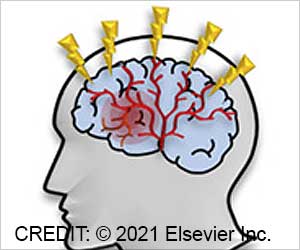Stanford Medicine research shows adaptive myelination in the brain may be crucial in developing opioid addiction.

Myelin plasticity in the ventral tegmental area is required for opioid reward
Go to source). Myelination allows electrical signals to travel faster and more efficiently through nerve fibers. Learning to juggle or practicing the piano, for example, gradually increases myelination in the brain circuits involved, optimizing for these abilities.
‘Did You Know?
The economic burden of opioid misuse in the U.S. is estimated at $78.5 billion annually. #opioid #addiction #learning #myelination’





But the same adaptive myelination that is essential to learning, attention and memory has a dark side. The economic burden of opioid misuse in the U.S. is estimated at $78.5 billion annually. #opioid #addiction #learning #myelination’
In the new study in mice, researchers found that a single dose of morphine was enough to trigger the steps leading to myelination of dopamine-producing neurons — part of the brain’s reward circuitry — spurring the mice to seek out more of the drug. When myelination was blocked, the mice made no effort to find more morphine.
The new findings show how using addictive drugs can drive maladaptive myelination of the brain’s reward circuitry, which in turn reinforces drug-seeking behavior.
“Myelin development does not complete until we’re in our late 20s or early 30s, which is kind of fascinating,” said Michelle Monje, MD, PhD, the Milan Gambhir Professor in Pediatric Neuro-Oncology and senior author of the study.
Even after such a protracted developmental period, special cells in the brain called oligodendrocytes continue to generate new myelin in some brain regions.
Advertisements
Brain Adaptation and Opioid Addiction
Research in neuroplasticity has mostly focused on changes that occur at synapses — where neurons meet and communicate with each other. Adaptive myelination adds a new layer to how our brains learn from experience.Advertisements
Subsequent studies by her lab and collaborators have found that mice need adaptive myelination for spatial learning — to navigate a maze, for example, or to remember a threatening situation.
In the new study, Monje’s team wondered whether adaptive myelination was involved in reward learning. The researchers generated a rewarding experience in mice by giving them cocaine or morphine, or by directly stimulating their dopamine-producing neurons using optogenetic techniques.
Within three hours of a single injection of cocaine or morphine or 30 minutes of stimulation, the researchers were surprised to see a proliferation of the specialized stem cells that are destined to become myelin-producing oligodendrocytes.
The proliferation was isolated to a brain region known as the ventral tegmental area, which is involved in reward learning and addiction.
“We didn’t think one dose of morphine or cocaine would do anything,” said Belgin Yalcin, PhD, lead author of the new study and an instructor in neurology and neurological sciences. “But within three hours there was a change. A very mild change, but still a change.”
Both the speed and specificity of the changes were unexpected, the researchers said.
When researchers repeated the drug injections or brain stimulation for several days, then examined the mice a month later, they indeed found more oligodendrocytes and more myelinated dopamine-producing cells, with thicker myelin around their axons, again only in the ventral tegmental area.
Even a slight thickening of myelin — in this case, by several hundred nanometers — can affect brain function and behavior.
“Details matter in terms of myelin plasticity,” Yalcin said. “So little can make such a big difference in conduction velocity and the synchronicity of the circuit.”
To see how the myelination translated into behavior, the researchers placed each mouse in a box where it could move freely between two chambers. In one chamber, the mice received a daily injection of morphine. (The researchers decided to focus on morphine because of its relevance to the opioid epidemic.)
After five days, the mice strongly preferred the chamber where they had received the drug and would linger there, hoping for another hit.
The morphine stimulated the mice’s reward circuitry (specifically, the dopamine-producing neurons in the ventral tegmental area), increased the myelination of these neurons and tuned their brains for further reward-seeking behavior.
Neuroplasticity's Impact on Opioid Addiction Curiously, when the researchers tested a food reward instead of morphine, the mice did not develop more food-seeking behavior, perhaps because the reward was less potent, the researchers said.
“You might not want your reward circuits to be modified by everyday kinds of rewards,” Monje said.
“In the healthy nervous system, adaptive myelination tunes circuit dynamics in a way that supports healthy cognitive functions like learning, memory and attention,” Monje said.
But as the new study demonstrates, the process can go awry, enhancing circuits that drive unhealthy behaviors or failing to enhance circuits required for healthy brain function.
In 2022, Monje’s lab reported that adaptive myelination could explain why some epileptic seizures worsen over time.
The experience of seizures drives more myelination of the circuits involved, allowing faster and more synchronized signaling, which become more frequent and severe seizures.
Her team also has found that reduced myelin plasticity contributes to “chemo-fog,” the cognitive impairments that often follow cancer treatment.
In the new study, the precise biochemical steps by which a drug reward leads to myelination are not completely clear. The researchers tried bathing oligodendrocyte precursor cells in dishes of morphine or dopamine and determined that neither chemical directly causes proliferation of these cells.
“A future direction would be to understand what exactly these myelin-forming cells are responding to that comes from the activity of dopaminergic neurons,” Yalcin said.
They found that a pathway known as BDNF-TrkB signaling is part of the story. When they blocked this pathway, the mice did not generate new oligodendrocytes and did not acquire a preference for the chamber where they received the drug.
“The mice just couldn’t learn where they received their morphine reward,” Monje said.
Ultimately, a better understanding of adaptive myelination might reveal new strategies to help people recover from opioid addiction. Perhaps the process can be reversed and an addiction unlearned.
“We don’t know whether these changes are permanent, but there’s reason to believe that they would not be,” Monje said. “We think that myelin plasticity is bidirectional — you can both increase myelination of a circuit and decrease myelination of a circuit.”
Reference:
- Myelin plasticity in the ventral tegmental area is required for opioid reward - (https://www.nature.com/articles/s41586-024-07525-7)
Source-Eurekalert














